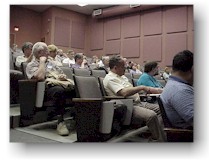Jan
12
Sat
NOVAC’s C.M. Crockett Site Page
Jan
14
Mon
Our next speaker is Gideon Bass and he will be speaking on Kepler Studies of Low-Mass Eclipsing
Summary of Upcoming Lecture
KIC 6131659 is a long-period (17.5 days) eclipsing binary discovered by the Kepler mission. We analyzed six quarters of Kepler data along with supporting ground-based photometric and spectroscopic data to obtain accurate values for the mass and radius of both stars, namely M1=0.922 ± 0.007Msun, R1=0.8800 ± 0.0028Rsun, and M2=0.685 ± 0.005Msun, R2=0.6395 ± 0.0061Rsun. There is a well-known issue with low mass (M <<0.8Msun) stars (in cases where the mass and radius measurement uncertainties are smaller than two or three percent) where the measured radii are almost always 5 to 15 percent larger than expected from evolutionary models, i.e. the measured radii are all above the model isochrones in a mass-radius plane. In contrast, the two stars in KIC 6131659 were found to sit on the same theoretical isochrone in the mass-radius plane. Until recently, all of the well-studied eclipsing binaries with low-mass stars had periods less than about three days. The stars in such systems may have been inflated by high levels of stellar activity induced by tidal effects in these close binaries. KIC 6131659 shows essentially no evidence of enhanced stellar activity, and our measurements support the hypothesis that the unusual mass-radius relationship observed in most low-mass stars is influenced by strong magnetic activity created by the rapid rotation of the stars in tidally-locked, short-period systems. Finally, using short cadence data, we show that KIC 6131657 has one of the smallest measured non-zero eccentricities of a binary with two main sequence stars, where e cos ω = (4.57 ± 0.02) × 10-5.
Jan
19
Sat
Jan 19 @ 10:30 pm – Jan 20 @ 2:30 am
Join NASA for a Star Party at the David. M. Brown Planetarium. They are looking for NOVAC to bring there scopes if you want to help out.
Jan
26
Sat
January’s Full Moon is the “Old Moon”, “Wolf Moon”, “Ice Moon”, “Moon after Yule”, or “Paush Poornima”
Feb
2
Sat
Feb 2 @ 11:00 pm – Feb 3 @ 4:00 am
See front page of NOVAC Site for changes to event. More information about Great Meadow including directions and parking visit the Great Meadow Site page.
Subscribe


